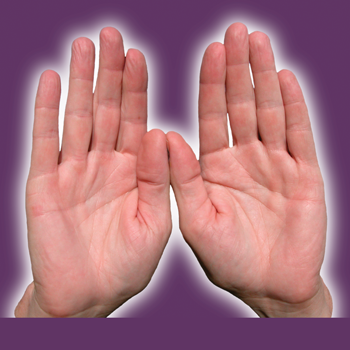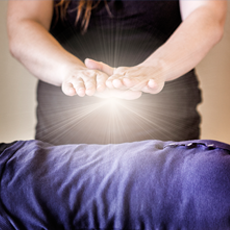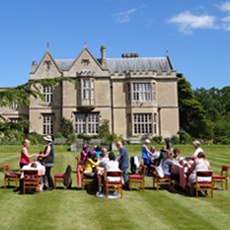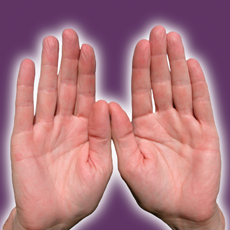by Philip Chan, M.D
Based on my personal experiences from December 1990 until April 1993, I would recommend the following approach to a health care provider (HCP) who wants to integrate Reiki into a conventional medical or nursing practice.
When a patient complains about a symptom which you think may respond to Reiki, ask if she/he would be interested in seeing if a "non-traditional bioenergetic system of stress relief would reduce her/his symptoms." (You may need to schedule the Reiki treatment for the end of the morning or afternoon after you have caught up with your other patients.) Explain that she/he may have sensations of heat, cold, tingling, pressure, waves of energy, or nothing, and that she/he can ask you to stop at any time if anything makes her/him feel uncomfortable.
I strongly recommend using the hands-over (hands are held one to four inches above the patient's body - Rand W.L., Reiki, The Healing Touch, c. 1991, p.40) rather than the hands-on technique for the treatment of any patient in a hospital or clinic setting. Most importantly, it removes issues of improper touching that can invite malpractice litigation and complaints of misconduct. It has been my experience that both the client and the channel are more aware of energetic sensations when not distracted by actual physical contact.
Limit yourself to one or two short 15 - 20 minute Reiki treatments during a work day. Channel Reiki for about one minute to each of three or four head positions, the point of maximum discomfort, and the chakra connected to the area of discomfort. You may also wish to spend a minute or two with beaming and absentee sending (Rand: op. cit., 39, 23). Before beginning a session and once at each position, ask the patient to quantify the intensity of both symptom and sensations on a scale from one to ten. (This kind of dialogue does not seem to decrease patients' benefit.) Spend the remaining time on the position where the patient perceived the most intense sensations or the greatest symptomatic relief.
If possible, arrange for one of your assistants to take Reiki training. (It is often preferable for you to sponsor your assistant's training. The assistant repays for the training with Reiki treatments to your patients rather than with cash.) When you are busy and your assistant is not, you can have her/him treat a patient in another room. One way for you and your assistant to treat patients together is to synergize your voltages with a Reiki-in-series technique. This involves adding your Reiki to that of your assistant by standing behind her/him and placing your hands on her/his temples or other standard Reiki back position while she/he is treating a patient. It is also useful to provide a handout which lists a few books on bioenergetic healing systems and the telephone numbers of one or two Reiki Masters in your area to those patients who express an interest in becoming channels or in just learning more (see the bibliography in the back of Reiki, The Healing Touch).
In my experience, the following conditions have responded to 15 minute treatments: headaches, muscle spasm, bursitis, dental pain, sinus congestion, cellulitis, acute herpes zoster (shingles), and itching from psoriasis. Using 15 minute treatments, I have had no success with reflex sympathetic dystrophy, warts, or skin diseases in general. Perhaps longer treatments for these conditions would produce better results.
A number of caveats for HCP's should be noted:
- At all cost, use Reiki as a supplement to, not a substitute for, conventional therapy. It is best to limit treatment to those patients with a firm diagnosis or at least a rational workup in progress and to those who are already receiving optimal treatment within the conventional Western medical system.
- One of the most acceptable ways to describe Reiki is as "a bioenergetic system for stress relief."
- It is easiest to channel Reiki in a practice in which you are the sole or senior proprietor. Hospital administrators vary widely in their receptiveness to alternative health systems.
- As a licensed HCP, you may be directed not to channel Reiki on hospital or clinic premises (as I was in April 1993) because you lack specific clinical privileges for that treatment modality. Because granting you privileges for Reiki would represent approval of the technique by the institution, many administrators would be reluctant to grant them to you or anyone else. Ironically, this "catch 22" situation would not be an issue for unlicensed clerical personnel in the same institution. (Editors note: Therapeutic Touch, another channeled type of bioenergetic stress reduction similar to Reiki is regularly used by nurses in hospitals across the country. A large volume of scientific research that verifies the value of bioenergetic healing has been compiled. Scientific literature on Therapeutic Touch can be found in most medical libraries - look it up under Therapeutic Touch and Dolores Krieger. This information may be helpful in gaining acceptance.)
I will continue to explore the possibilities for Reiki in medical practice. Despite the problems, the skeptics, the detractors, and the patients that do not respond, channeling Reiki has been one of the most rewarding experiences of my life. I derive far more personal satisfaction from relieving a headache by directing the Universal Life-Force Energy through my empty hands than from excising a skin cancer or writing a prescription for erythromycin. Perhaps as important, channeling assists me in perceiving even the most manipulative and non-compliant patients simply as fellow students in Earth School. It is my hope that this article will assist other HCP's to share in that magic.







